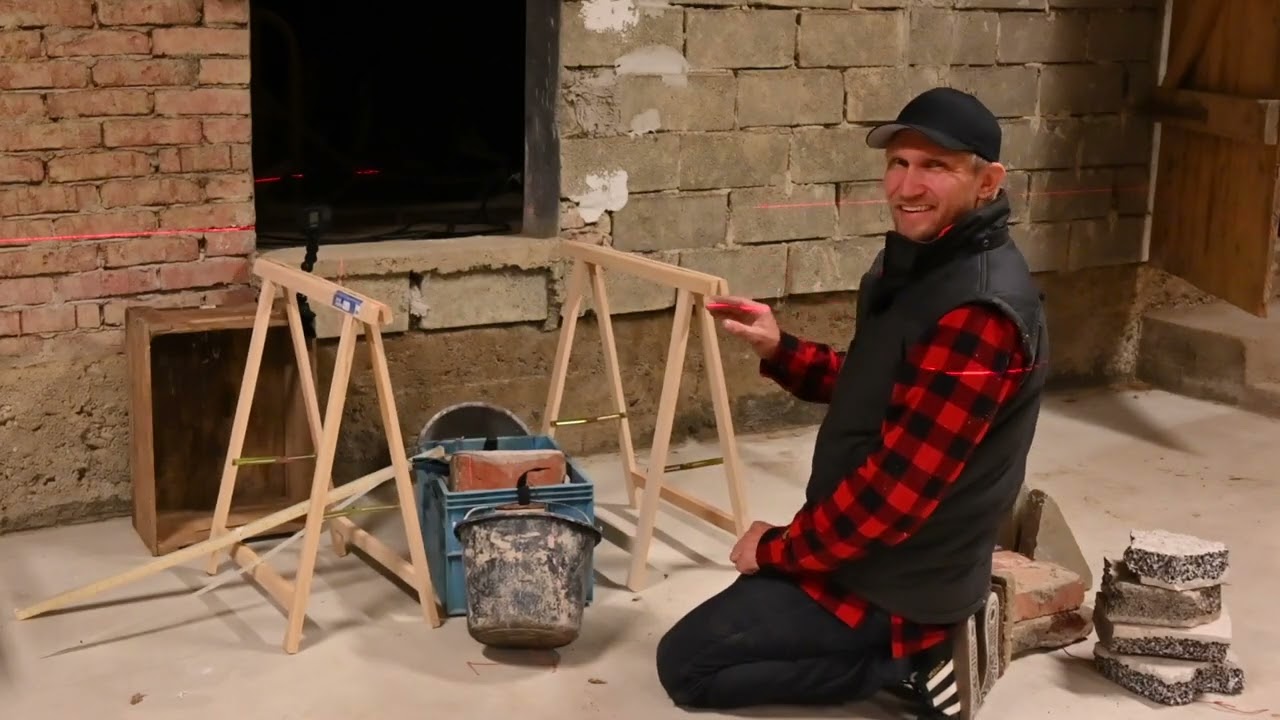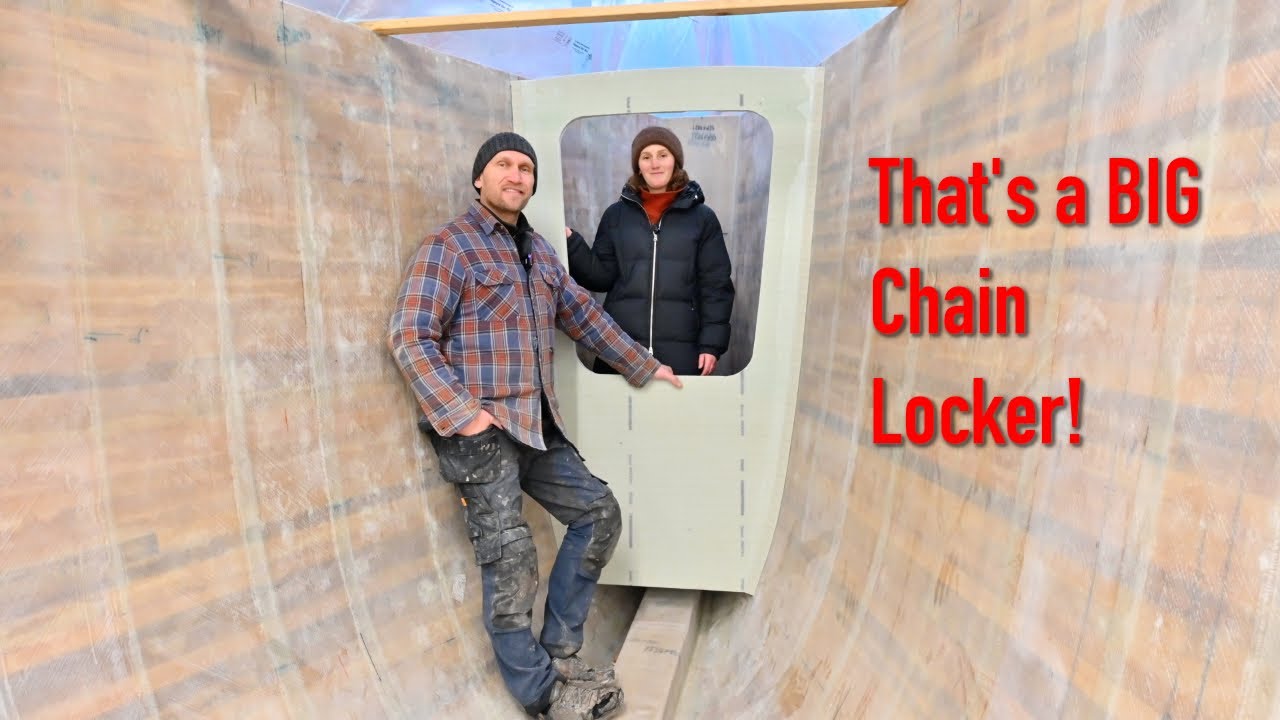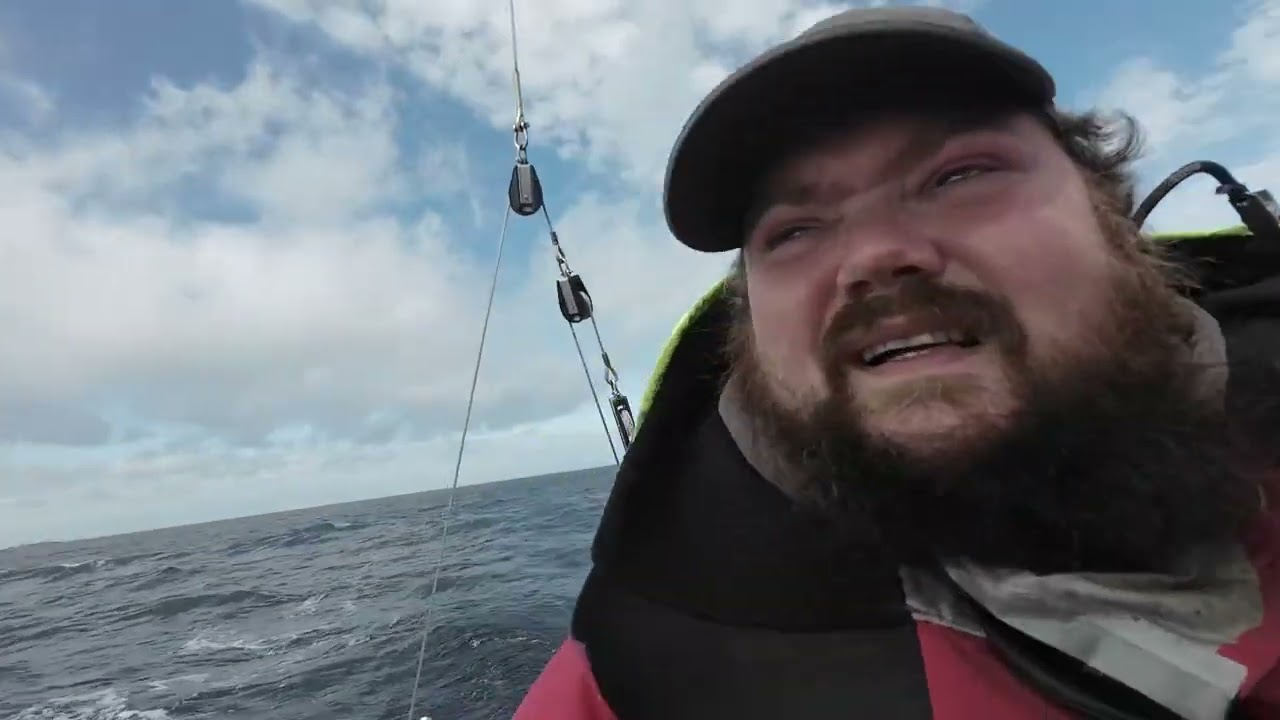Alăturați-vă echipajului RAN Sailing ~ pentru streamuri live, conținut exclusiv și multe altele https://www.patreon.com/ransailing V-ați întrebat vreodată care material de construcție a bărcii este cel mai rezistent? Aflați în testul nostru de materiale! Suntem o familie suedeză care a navigat prin lume din 2016 în timp ce împărtășim aventurile aici pe YouTube. Barca și casa noastră este un Najad 440 din 1988. Postăm un nou episod în fiecare vineri, așa că asigurați-vă că vă abonați și apăsați clopoțelul pentru a fi primii care află când există un nou episod! CONECTAȚI-VĂ CU NOI – Site: http://ransailing.se – Instagram: http://www.instagram.com/ransailing – Facebook: http://www.facebook.com/ransailing PRODUSE ȘI CAMERA: https:// www.amazon.com/shop/ransailing Am adunat unele dintre produsele pe care le folosim în viața noastră de croazieră și realizarea de videoclipuri în magazinul nostru Amazon. Dacă cumpărați oricare dintre articolele din magazinul nostru, primim un mic „ka-ching” în pisicuța noastră de croazieră (fără costuri suplimentare pentru dvs.). Mulțumesc mult și mulțumesc programului Amazon Influencer. Credite muzicale: http://www.epidemicsound.com Love, Malin, Johan & Vera
source
Testul materialului carenei bărcii – care se rupe mai întâi? – Ep. 319 RAN Sailing

38 thoughts on “Testul materialului carenei bărcii – care se rupe mai întâi? – Ep. 319 RAN Sailing”
Comments are closed.




Great episode! 👍👍
⛵🌏🐠📸🩳⛱👙🩴🎣🤿🥽🐚🐟💧🌴🦈☀️🇦🇺
When building a boat you might also want to look into the ability of wood to deal with shock loading. If you can get it you might want to look at hickory wood.
No one uses Davina cell that I know off any more, if you use foam use core cell 80 prof .and my laminate schedule will pass assure you .
If you use wood it must be Western red because of its rott proof to wait to strength after a laminate schedule is assigned.thats the real test .
I did test with foam and glass before I built my cat spent$ 500 on samples because of the reputation of other foams before core cell was invented..
Spruce is nice wood ,but in different applications .
Just sharing my experience .
Itressant som vanligt!
Jag tycker att ni väljer helt rätt spår att gå med tillverkningsmetoden och båt design!
kommer bli mycket spännande att följa
som materialingenjör vill jag bara påpeka några detaljer
1. Det är stor skillnad på styrka och styvhet,
2. böjstyvheten påverkas väldigt mycket av formen på biten.
För att kunna dra någon som helst slutsats om materialens egenskaper jämför med varandra så måste bitarna ha exakt samma form, sen räkna bort viktskillnaderna.
Det enda man vill ha kvar som variabel är ju materialet.
stålbiten hade då säkert vägt 30ggr mer är träbitarna men då delar man kraften som den klarade med 30. detta är inte en detalj i det hela utan helt avgörande.
Det beror på att höjden på biten påverkar så oerhört mycket för styvhet och styrka för biten i sig. det beror på att förhållandet är ^2 så om en bit är dubbelt så tjock blir den 4ggr starkare, om den är 4ggr så tjock blir den 16ggr starkare och styvare. t.ex.
Stål är nästan 3ggr styvare än aluminium, väger 3ggr mer men kan ibland vara nästan lika starka. därför är det viktigt att särskilja dessa egenskaper.
Jag förstår såklart att ni gjort bitarna ungefär som de hade sett ut i ett skrov men det blir rörigt och jag vill bara poängtera att det då mer blir ett formtest än ett materialtest.
good explanation, did you know that duracell project uses vaccuum backs?
Same in Australia, Oregan Pine is Douglas Fir
Thank you
Hej.
Kompositlaminat fungerar på samma sätt som en i-balk. Sandwich materialets tjockhet (i-balkens höjd) är faktorn som påverkar hållbarheten mest. Om ni handlaminerar se till att lägga epoxy både före och efter applikation av glasfiber.
Extremely interesting, thank you very much! Too impressed by the more 1000+ year old material used by the vikings- wood.
Extremely interesting, thank you very much! Too impressed by the more 1000+ year old material used by the vikings- wood.
Just as an idea to rehabilitate the metals a little bit: did You think about Origami-building the hull?
There's probably no faster, more satisfying or cheaper (in terms of additional framing materials and consumables) way to put together a metal hull for a small-ish cruising sailboat-hull. Putting together the hull and deck within a week or two (compared to a whole summer for a composite wood/fiberglass hull'n deck) would open a pretty wide time-window for more elaborate inside outfitting. Price is an issue for alu of course (and I would not want a steel hull for corrosion reasons).
Anyway thanks for sharing! Cheers
And edit: You can vastly improve Your impact stability of a strip-wood-fiberglass composite hull with a couple layers of aramid fibercloth outside the "core" (or within the first layer of decorative outside veneer in a lamellated ply hull, for that matter).
Aramid is the yellowish fiber used for modern bullet proof vests. Grandios impact catching properties if worked into the construction in the right way.
When it comes to vacuum bagging: It is so much easier than You think, You can use pumps from lung ventilators out of hospitals (which are sold off cheaply after certain amounts of hours on the clock, no matter how well functioning – zero failure tolerance of course) or bigger compressors out of cooling- or air conditioning-devices. Once Your first layer is air-tight You can go on vacuum bagging (on both sides alternating if need be) with no big effort and nearly without additional bracing or formkeeping. We used normal cheap 50µ to 100µ PE construction foils, some pond building root-helper (as a distance-layer for air to get through), a vlies and a peeling layer together with four lung ventilators for veneered composite hulls up to 14 meter with good results. Preparation and workflow is key here, but You can easily do it mostly alone.
Only thing a little bit more complicated in terms of composite layers would be using a deepfrozen prepreg material, while there's no need for that in a cruising hull.
Intressant! Svensk gran verkar ju vara både billig och bra, men i allmänhet har den kvistar. Svensk fura kan man få kvistfri eller nästan kvistfri, men den är ju litet dyrare, men en bonus är, att den innehåller så mycket harts, att den är motståndskraftigare mot röta än granen. Furu har väl förutom gran använts mycket i Norden som bordläggning vid bygge av träbåtar. Böjlighet är väl annars en fördel när bordläggningen skall läggas, men man kan ju alltid "basa" de bord som kräver mycket böjning. Intressant, att följa med vad du besluter dej för.
🙂
Do a combination. Spars and ribs of cedar and the skin of Swedish
…and this is why metals and woods are used in I- and Box- beamed construction for strength vs. weight. even the simplest I-structure in steel would be 25x stronger.
Check out basalt instead of GF…its lighter and tougher its also greener and probably cheaper…
An other Swedish boat builder
Interview him, not far from your place
https://youtu.be/QIP0dPIKVls
Great job and good fun….
Well done and informative.
Where are your safety glasses Johan? You're supposed to be setting a good example for your daughter. Just joking, great video. I am excited to watch your family build your upcoming home away from home.
I vote for Cedar. It is light, strong, and rot resistant. My 54 year old, cedar on oak, strip planked sailboat has been around the Pacific ocean several times so far, survived a hurricane in Hawaii in '82, on anchor, was washed up onto a rock jetty where her side planks were scrubbed half way through till the authorities craned her back to the anchorage. She was then sailed back to Seattle where her planks were replaced. The strength of wood is amazing.
Since bending strength is so much influenced by section thickness, it's interesting that for a model of a boat skin that the material density was so much offset by its strength. If one were building a beam instead of a hull it would be possible to vary the width of the section, increasing the strength of several of the samples – steel, especially. Coupon pull tests might be interesting too.
Hi again, Yep you are right, we Oregonian call our trees Douglas Fir it only grows on the coastal mountain, and on the west slope of the Cascade Mountain , you have seen it when you guys were in British Columbia it grows in Washington as well,
Wow thats was interesting, try a I beam test between the Swedish Ceder,Fir and the Douglas Fir and the Canadian Ceder just curious, if you are up to it? Enjoy your videos
I think this test should have compared several materials in relation to a given strength and not to a certain weight. An interesting value of strength could tell something about the intrinsic characteristics of the material. For instance, the failure of the wooden pieces is abrupt (even with fiberglass) while the metals deflect. Maybe the deflection before a failure is a much safer mechanism of failure in a boat?
Astroia Oregon is a beautiful town that is built by the Scandinavian peoples a lot of the home were built Victoria styles and the wood they were were both western cedar and Douglas Fir. You watch a Video DVD called Short Circuit 1 and 2 and movie call the Goonie all film in Astroia, Oregon and 40 miles south there is a Bay called Tillmook Bay and old story goes there was a whaler and rowed into the bay and lived among the Tillmook Indians and He ask if he could live with them and the Chief show him where he could live, it was a old tree live in the base of it his name is Joe Champion there was a Swedish boat builder that he who who build the first boat on the coast expect for Indians who built a canoe out of a log. there is a book about this guy, if you like this kind of stuff Tillmook Historical Society. Enjoy
Thanks guys, I was going to build my cat out of divinycell but you demonstration has convinced me to go with WRC. A lot of dumb Aussies are pulling out Cedar ceilings and wall cladding so I can get it quite cheaply all be it with a few nail holes. Cheers Hugh
You should take a look at Duracell Project here on YouTube. He seems to be very familiar with vacuum bagging, and he makes it look way more manageable then a lot of other boat builders.
Are the old classics like Larch on Oak no good on a boat like the one you are designing m8 – loved the video as usual!
Enjoyed the video. Although the test wasn’t a scientific one, it clearly demonstrated your approach to every project that you are taking on. You guys are immensely diligent and methodical, when it comes to dealing with everything in life and sailing. I have no doubts that you will build a great new sailing boat, which is perfectly suited to your family’s needs.
Hi guys, I've been watching your videos for about a year now and have really enjoyed them. I'm looking forward to following your boat building adventure. Your material testing was interesting. I'm a structural engineer and I appreciated your set up and especially the laser level you were using to check deflection. However, I'm not sure you were testing apples to apples. Without getting too deep into the nerdy engineering, there's a difference between the overall strength of a material and the stiffness of a section of the same material. I'm sure that's not news to you as a woodworker. If I understood the testing parameters, you were trying to keep each test specimen roughly the same weight and width. That meant adjusting the thickness, or depth, of each specimen to even out the weights between specimens. However, stiffness is directly proportional to the cube of the depth of each of these rectangular sections. A little change in depth goes a long way to making something stiffer. That's why the Western Red Cedar seemed so much "stronger" than the other materials. Because it is a lighter wood (it's weight is about 70% of Douglas Fir and only about 58% as strong), you could make it a deeper section, and thus stiffer than the Doug Fir section. (BTW: Never heard of "Oregon Pine" as a wood species. Sounds like a marketing ploy.) Anyways, there are plenty of weeds to wander into regarding all this if you're interested. But between you and your marine architect, I'm sure you've got a good handle on it. Again, I'm really looking forward to your boat build. Best of luck and keep up the good work!
I live in brookings oregon and I've not heard ofit
When studying woodworking many years ago I came upon the work of James Krenov . He used what he referred to as "Oregon pine" with beautiful results. It took me quite a while (pre internet) to find out that it was Douglas fir. Besides being beautiful, it is a stable and resilient species and I was surprised that your spruce compared so well. Happy for you.
Nerdy guy here – this was fun and useful, and generally quite awesome! Hull shape would (will) help for all of these also, of course, compared to flat straight 25mm wide samples in uni-axial bending, as the compound curves will add strength and toughness due to the arch geometries.
That was really cool to see, can’t wait to watch you build a Swedish boat from Swedish wood!
What are the sawhorses made of? Are they store-bought or did you make them? From plans? I have a 30×40' building, but I won't be building a boat. I just built a 'balcony' with a window access so the cat who resides inside and keeps critters at bay can go in and out at will. The old balcony wore out after only 15 years, so I used treated lumbar sealed with waterproofing to try to make it last longer. You have a huge multi-year job ahead of you and I hope you get help along the way.
The strength of a boat has lot to do with its shape and internal structures.